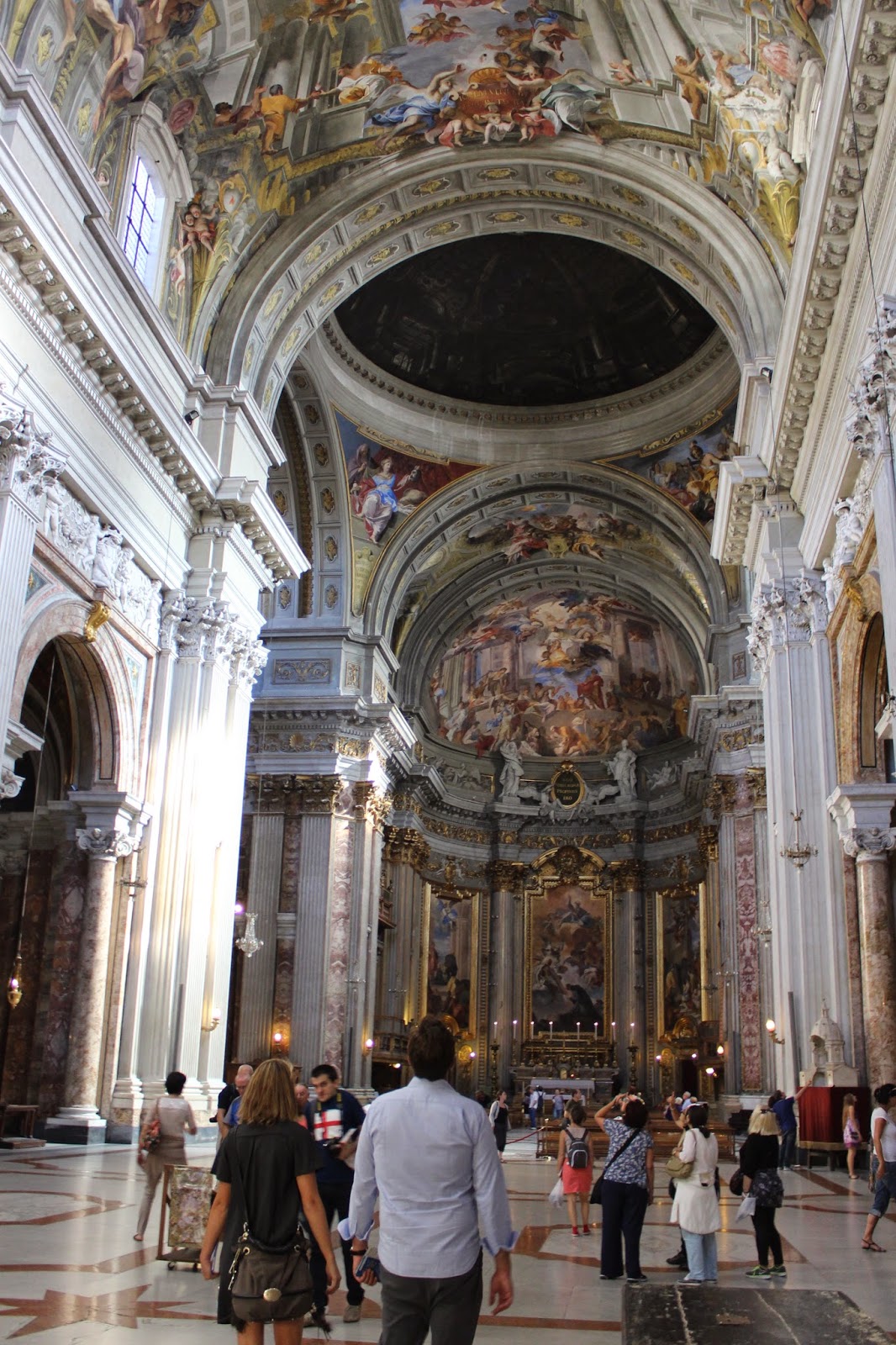The Capitoline Museums (or Musei Capitolini in Italian) originate from a donation of bronze sculptures to the people of Rome in 1471 by Pope Sixtus IV. In the 1530s the famous Ninja Turtle, Michelangelo (with the forks and the orange colors) designed the layout of the plaza, which took a few hundred years to complete. Nowadays it's three main buildings, the Palazzo Senatorio (in front of you as you enter), Palazzo Palazzo dei Conservatori (to the right as you enter the plaza) and the Palazzo Nuovo, (directly across from the Palazzo dei Conservatiori). As you enter to the right in the Palazzo dei Conservatori, you will go downstairs to a series of epigraphs (stones with writing on them) and some old Roman home's ruins. The epigraphs are in many languages. Here's a recipe for Hummus:
Here's a menora:This collection actually goes underneath the plaza.
You can see some old Roman ruins in a bare hallway, that also shows views of the Roman Forum.
Inside there are some statues. Here's a foot of a Colossus Constantine:
It must have been rather colossal:
Here is the marble the Colossus Constantine was playing with:
Inside the museum you can see many paintings, like this one of Hannibal trying to destroy Rome:
This is a Herma, which is a style used by lazy sculptors who prefer to sculpt the essentials:
A close up reveals the Romanus Pubis, in the Patrician style:
Inside the building is the original statue of Mark Anthony, a Latin singer. A copy of the statue is outside in the Plaza.
Also a Christian horse is being martyred:
There is a large head of Constantine, who apparently thought of himself as pretty awesome:It seems like Constantine made a lot of these kitschy Colossuses (Colossusi?)...
You can see a Medusa, a mythical greek demi-god who was raped by Poseidon in a Temple of Athena, so of course Athena got mad and turned her hair into snakes:
Then you can see the famous statue of Romulus and Remus, two industrious wolf-milk farmers who founded Rome:
Outside I suggest you take a walk throughout Rome! It's quite compact actually, and you'll always stumble into something nice! Here is what must be the Teutonic Embassy:

Great sights are everywhere! Check out these glutes:
He's also a seagull resting perch:
Does anyone know what statue this is? You can post below anonymously.
I saw this pretty door along the way and liked it:
Here's a church we wandered into:
Pretty paintings on the ceiling!...and you can walk to the Pantheon, built around 40 BC by Agrippa as a private temple. Good transition, right?
The cool part here is the dome, which is made out of tapered concrete, that gets thinner and lighter as it reaches to the oculus:
The name Pantheon implies that the building is made for all gods (Pan Theos), but this was probably not the case:
Romans had decided long before the Pantheon was built that each templs should represent only one god each:
This way, it was more facile to determine which god was angry and needed appeasing, say if a lightning strike damaged a specific temple.
Here's some panoramas we tried out:
There's also pews for worshippers:I'm not sure which god they're there for...
Maybe Pan, the god of bread?
Tasty, tasty Italian Bread!

Well Compares! I hope you enjoyed! Follow me on the Facebook to keep up with my weekly posts!!*
*Not on weeks when I'm lazy.









































Hi great reading your poost
ReplyDelete